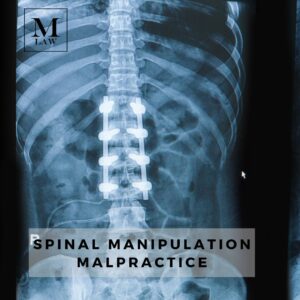Imagine waking up from surgery, only to find out that you received a completely different operation than you were supposed to. Wrong patient surgery refers to the alarming scenario in which a surgical procedure is performed on a patient who is not the intended recipient. This medical error can have devastating consequences, leading to unnecessary interventions, complications, and emotional distress for the patient, their family, and the healthcare professionals involved. While such cases are relatively rare, even a single occurrence is one too many.
How often is a surgery performed on the wrong patient?
Cases of surgery performed on the wrong patient are fortunately rare. Health systems and healthcare providers have implemented numerous safety measures to prevent such errors. While precise statistics on the frequency of wrong patient surgery can vary, studies and data indicate that these incidents occur in a very small percentage of surgical procedures.
According to a study published in the Journal of the American College of Surgeons in 2013, wrong patient surgeries were found to account for approximately 1 in 112,994 operations. These figures suggest that wrong patient surgeries are infrequent events.
Nevertheless, even though the occurrence of wrong patient surgery is rare, healthcare professionals and organizations continue to prioritize patient safety through ongoing education, standardized protocols, and robust verification processes to minimize the risk of such incidents and ensure the highest standard of care.
Wrong Patient Surgery Cases
Despite being rare, there are plenty of documented cases of wrong patient surgery.
In 2019, wrong patient identification led to a transplant mix-up in Lourdes Hospital Transplant Center.
According to available documentation, two patients with similar names who were around the same age both needed a kidney transplant. When the mix-up occurred, doctors gave a donor kidney to the wrong patient. It was only through a sheer miracle that the kidney was also a match for the incorrect patient, and the patient survived.
Another kidney mishap was reported on by CNN in 2016. Allegedly, doctors at St. Vincent Hospital in Worcester removed a kidney from the wrong patient.
Causes of Wrong Patient Surgery
Several factors can contribute to wrong patient surgery. Common causes include:
- Miscommunication: Inadequate communication among healthcare providers, particularly during handoffs, can lead to errors in patient identification and verification.
- Patient Misidentification: Failure to correctly identify patients, particularly those with similar names or when multiple patients are being treated simultaneously, can result in mistaken surgeries.
- Inadequate Documentation: Poor documentation practices, incomplete medical records, or illegible handwriting can contribute to confusion and errors in patient identification.
- Electronic Health Record (EHR) Errors: Technical glitches or incorrect data entry into electronic health records can result in incorrect patient information being displayed or communicated.
- Systemic Issues: Inadequate standardization of protocols, insufficient verification processes, fatigue, time pressure, and organizational culture that does not prioritize safety can all contribute to wrong patient surgery.
Preventative Measures
Ensuring patient safety in the operating room should be a paramount concern for healthcare providers. Here are essential steps that can significantly reduce the occurrence of wrong patient surgery:
- Preoperative Verification: Implementing a robust verification process is critical. It involves verifying patient identity through multiple identifiers, such as name, date of birth, and medical record number. This verification should occur at various stages, including during pre-operative evaluations, consent discussions, and before the surgery begins.
- Standardized Protocols and Checklists: Developing and adhering to standardized protocols and surgical checklists can serve as powerful tools in preventing wrong patient surgery. These checklists should include steps for patient identification, confirmation of the surgical site, and clear communication among the surgical team.
- Team Communication and Collaboration: Encouraging open and effective communication among healthcare professionals is vital. Implementing team briefings before surgery, encouraging the use of standardized terminology, and fostering an environment where questions and concerns are addressed can help mitigate errors.
- Technology Integration: Leveraging technology, such as barcode scanning systems, electronic patient identification, and electronic surgical site marking, can enhance patient safety and reduce the risk of wrong patient surgery.
- Ongoing Training and Education: Providing regular training to healthcare professionals about patient safety, proper identification protocols, and error prevention strategies is essential. Continuous education fosters a culture of vigilance and reinforces the importance of patient safety.
If you believe that you received a surgery that was intended for someone else, please contact the medical malpractice attorneys at Merson Law immediately. We can help build a case for you and fight for financial compensation for your sustained injuries. Give us a call at 212-603-9100 or fill out our contact form to get in touch.








